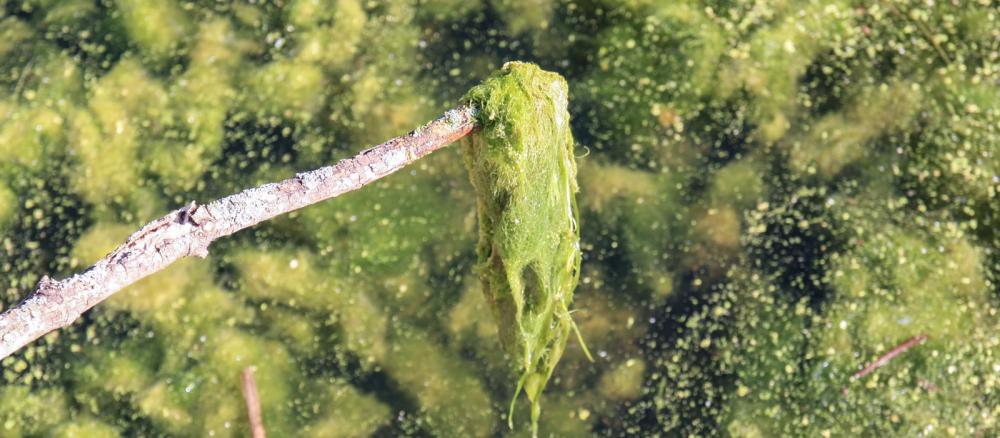This year’s persistent hot, dry conditions are increasing the potential for algal blooms, including the kind that can be harmful to people and pets. All regions of Minnesota have reported suspected blue-green algal blooms this summer.
The Minnesota Pollution Control Agency (MPCA) is advising people to stay out of lakes and streams if the water looks green and slimy. The algae could contain a toxic bacteria that can sicken people and kill dogs, livestock, and other animals within hours of contact.
“If in doubt, stay out,” says Lee Engel, surface water monitoring supervisor for the MPCA. “Hot, dry conditions are ideal for growing algae. We are experiencing higher temperatures due to climate change, and that means warmer lakes, even in Northern Minnesota. We are seeing harmful algal blooms in more places, some of which persist throughout the season.”
Potential health impacts
In recent years, resident have reported multiple dog deaths where exposure to toxic algae was the likely cause. People can protect their dogs by:
- keeping them out of algae-laden water
- hosing them off immediately after playing in any lake or stream
- preventing them from ingesting affected water or licking toxins from their coat to prevent illness
- seeing a veterinarian immediately if your dog may have been exposed to blue-green algae
People who come into contact with toxic blue-green algae can experience skin, throat, eye, and nose irritation and nausea. Don’t swim in water that you suspect has blue-green algae. If you come in contact with algae, rinse off with clean water afterwards.
Addressing the main cause of algae
Phosphorus, the top pollutant of concern in Minnesota lakes, fuels the growth of algae. In 25% of Minnesota lakes, levels of phosphorus and algae are too high, so the lakes don’t meet the water quality standard for recreation. Preventing phosphorus pollution is even more important in lakes warming as a result of climate change; warmer water also promotes algae growth.
Landowners and residents can help reduce phosphorus in lakes by:
- reducing urban stormwater with rain gardens, rain barrels, and fewer impervious surfaces
- using phosphorus-free lawn fertilizer, keeping grass clippings and other yard waste out of storm drains, and picking up after pets
- building soil health to reduce cropland runoff by planting cover crops, increasing organic matter, and reducing tillage
- planting deep-rooted native plants along ditches, lakes, and streams to slow down and filter runoff
- managing manure responsibly to keep it out of lakes and streams
The MPCA and its partners are working to reduce phosphorus pollution. For example, the MPCA and Science Museum are studying algal blooms in Lake of the Woods to help restore it. The Willmar Area Lakes Association and local partners are organizing residents to control stormwater with rain gardens and other practices. Communities like Faribault, Northfield, and Owatonna are investing in wastewater treatment to decrease the phosphorus they discharge to rivers and downstream lakes.
